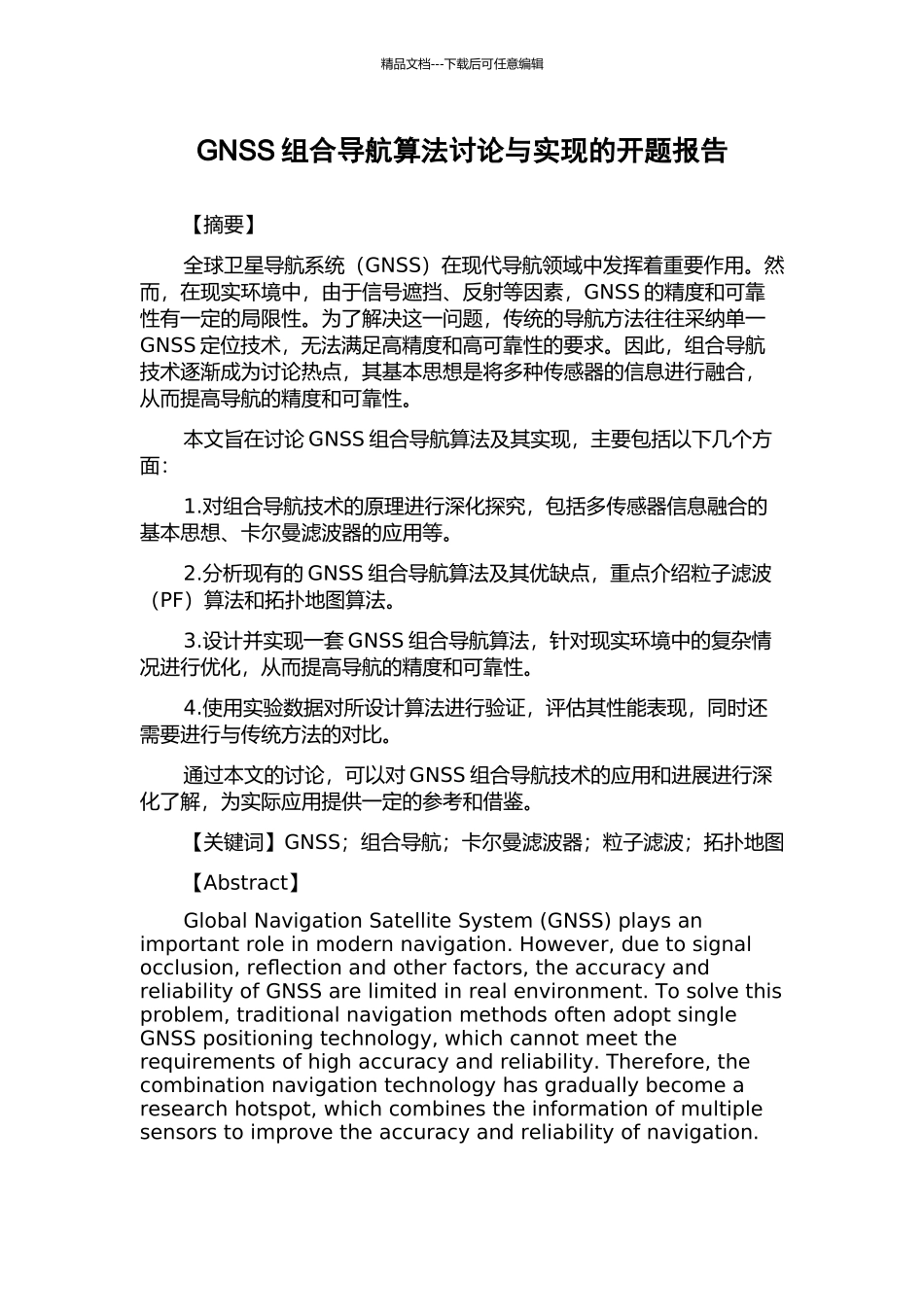精品文档---下载后可任意编辑GNSS 组合导航算法讨论与实现的开题报告【摘要】全球卫星导航系统(GNSS)在现代导航领域中发挥着重要作用。然而,在现实环境中,由于信号遮挡、反射等因素,GNSS 的精度和可靠性有一定的局限性。为了解决这一问题,传统的导航方法往往采纳单一GNSS 定位技术,无法满足高精度和高可靠性的要求。因此,组合导航技术逐渐成为讨论热点,其基本思想是将多种传感器的信息进行融合,从而提高导航的精度和可靠性。本文旨在讨论 GNSS 组合导航算法及其实现,主要包括以下几个方面:1.对组合导航技术的原理进行深化探究,包括多传感器信息融合的基本思想、卡尔曼滤波器的应用等。2.分析现有的 GNSS 组合导航算法及其优缺点,重点介绍粒子滤波(PF)算法和拓扑地图算法。3.设计并实现一套 GNSS 组合导航算法,针对现实环境中的复杂情况进行优化,从而提高导航的精度和可靠性。4.使用实验数据对所设计算法进行验证,评估其性能表现,同时还需要进行与传统方法的对比。通过本文的讨论,可以对 GNSS 组合导航技术的应用和进展进行深化了解,为实际应用提供一定的参考和借鉴。【关键词】GNSS;组合导航;卡尔曼滤波器;粒子滤波;拓扑地图【Abstract】Global Navigation Satellite System (GNSS) plays an important role in modern navigation. However, due to signal occlusion, reflection and other factors, the accuracy and reliability of GNSS are limited in real environment. To solve this problem, traditional navigation methods often adopt single GNSS positioning technology, which cannot meet the requirements of high accuracy and reliability. Therefore, the combination navigation technology has gradually become a research hotspot, which combines the information of multiple sensors to improve the accuracy and reliability of navigation.精品文档---下载后可任意编辑This paper aims to study the GNSS combination navigation algorithm and its implementation, including the following aspects:1. In-depth exploration of the principles of combination navigation technology, including the basic idea of multiple sensor information fusion,...

